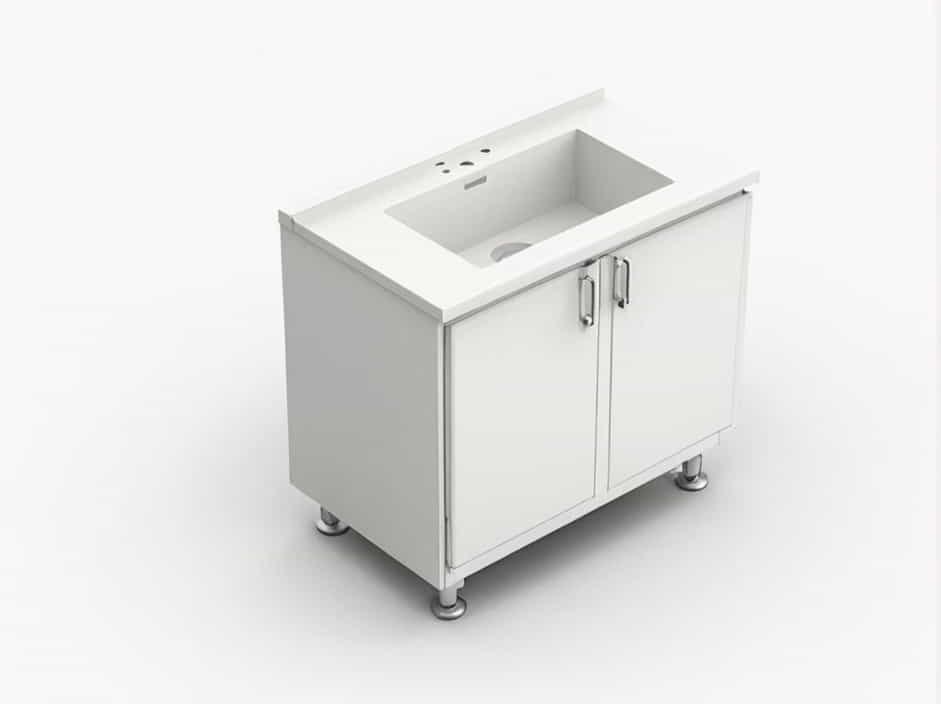When working with casework families in Revit, you might encounter an issue where the casework does not appear correctly cut in plan view. This problem can be frustrating, especially when working on detailed construction drawings. Understanding the possible causes and solutions will help ensure your casework displays as expected.
This topic will explore why casework is not cutting in plan view and provide practical steps to fix the issue.
Common Reasons Why Revit Casework is Not Cutting in Plan View
1. Casework Family Cuttable Parameter
One of the most common reasons casework does not cut in plan is that the casework family is not set to be cuttable. In Revit, not all families are automatically cuttable.
✔ Solution:
- Open the casework family in the Family Editor.
- Check if the “Cuttable” parameter is enabled.
- If it is not cuttable, you may need to recreate the casework using a different category, such as generic models or another cuttable category.
2. View Range Settings
Revit’s view range settings determine what elements are visible and how they appear in a plan view. If the cut plane is not set correctly, casework may not be displayed as expected.
✔ Solution:
- Go to View Properties and click on View Range.
- Adjust the Cut Plane to ensure it intersects with the casework.
- If necessary, lower the cut plane to slice through the casework properly.
3. Family Category and Visibility Settings
Some casework families may have visibility settings that prevent them from displaying properly in plan view.
✔ Solution:
- Open the Family Editor and check Visibility Settings.
- Ensure that the family is set to be visible in Plan View.
- Confirm that the “Show family in plan” option is selected.
4. Cut Plane Not Intersecting the Casework
If the cut plane height in the view range settings does not intersect with the casework model, it will not display as cut.
✔ Solution:
- Adjust the cut plane height in View Range to ensure it intersects the casework.
- Check the casework height in the Properties Panel to confirm the correct level.
5. Display Settings in Object Styles
Sometimes, the issue is related to the Object Styles settings, which control how Revit displays various categories of elements.
✔ Solution:
- Go to Manage > Object Styles and check the Casework Category settings.
- Ensure that the correct line weights and visibility settings are applied.
Advanced Fixes for Casework Not Cutting in Plan
1. Override Graphics in View
If casework is not cutting properly, you can manually override the graphics in view.
✔ Solution:
- Select the casework in Plan View.
- Right-click and choose Override Graphics in View > By Element.
- Adjust the line weight, transparency, and visibility settings as needed.
2. Use Cut Planes in Family Editor
If your casework family does not behave as expected, you may need to modify it directly in the Family Editor.
✔ Solution:
- Open the casework family.
- Add cut planes manually to define where it should be cut.
- Reload the family into the project and check if it cuts correctly.
3. Use Generic Models Instead of Casework
In some cases, the casework category does not support cutting in plan views. Switching to a Generic Model category may solve the issue.
✔ Solution:
- Open the Family Editor.
- Change the Family Category from Casework to Generic Models.
- Save and reload the family into your project.
4. Adjust Detail Level in View Properties
Revit’s detail level settings can affect how casework appears in plan views.
✔ Solution:
- Click on the View Properties panel.
- Set the Detail Level to Medium or Fine instead of Coarse.
Best Practices to Avoid Casework Display Issues
✔ Always check the Cuttable parameter when creating or modifying casework families.
✔ Set the correct cut plane height to ensure it intersects with casework.
✔ Use Override Graphics in View to control visibility when necessary.
✔ Consider using Generic Models for complex casework elements that do not cut properly.
✔ Regularly review View Range settings to confirm correct display.
The issue of Revit casework not cutting in plan view is often caused by incorrect family settings, view range configurations, or visibility options. By following the troubleshooting steps outlined in this topic, you can resolve the issue and ensure your casework displays correctly in plan view.
Applying best practices when working with casework families in Revit will help prevent similar issues in the future, making your workflow smoother and more efficient.
